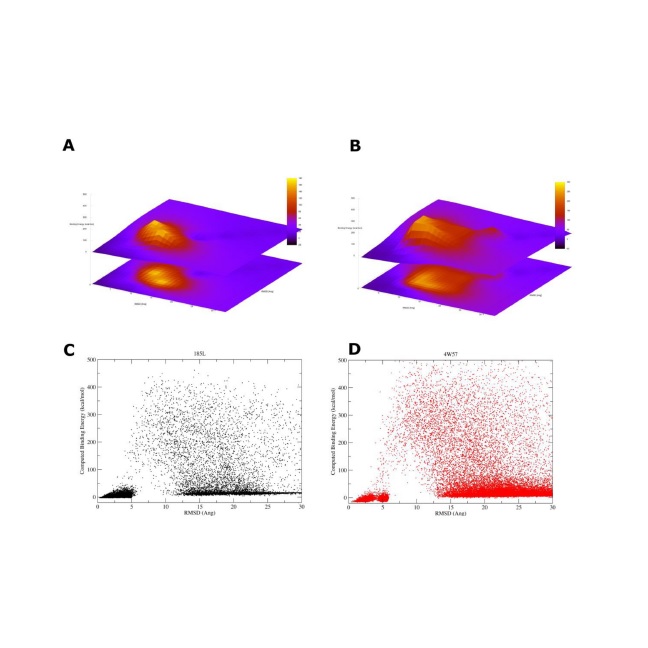 Abstract: The correct evaluation of ligand binding free energies by computational methods is still a very challenging active area of research. The most employed methods for these calculations can be roughly classified into four groups: (i) the fastest and less accurate methods, such as molecular docking, designed to sample a large number of molecules and rapidly rank them according to the potential binding energy; (ii) the second class of methods use a thermodynamic ensemble, typically generated by molecular dynamics, to analyze the endpoints of the thermodynamic cycle for binding and extract differences, in the so-called ?end-point? methods; (iii) the third class of methods is based on the Zwanzig relationship and computes the free energy difference after a chemical change of the system (alchemical methods); and (iv) methods based on biased simulations, such as metadynamics, for example. These methods require increased computational power and as expected, result in increased accuracy for the determination of the strength of binding. Here, we describe an intermediate approach, based on the Monte Carlo Recursion (MCR) method first developed by Harold Scheraga. In this method, the system is sampled at increasing effective temperatures, and the free energy of the system is assessed from a series of terms W(b, T), computed from Monte Carlo (MC) averages at each iteration. We show the application of the MCR for ligand binding with datasets of guest-hosts systems (N = 75) and we observed that a good correlation is obtained between experimental data and the binding energies computed with MCR. We also compared the experimental data with an end-point calculation from equilibrium Monte Carlo calculations that allowed us to conclude that the lower-energy (lower-temperature) terms in the calculation are the most relevant to the estimation of the binding energies, resulting in similar correlations between MCR and MC data and the experimental values. On the other hand, the MCR method provides a reasonable view of the binding energy funnel, with possible connections with the ligand binding kinetics, as well. The codes developed for this analysis are publicly available on GitHub as a part of the LiBELa/MCLiBELa project (https://github.com/alessandronascimento/LiBELa). Abstract: The correct evaluation of ligand binding free energies by computational methods is still a very challenging active area of research. The most employed methods for these calculations can be roughly classified into four groups: (i) the fastest and less accurate methods, such as molecular docking, designed to sample a large number of molecules and rapidly rank them according to the potential binding energy; (ii) the second class of methods use a thermodynamic ensemble, typically generated by molecular dynamics, to analyze the endpoints of the thermodynamic cycle for binding and extract differences, in the so-called ?end-point? methods; (iii) the third class of methods is based on the Zwanzig relationship and computes the free energy difference after a chemical change of the system (alchemical methods); and (iv) methods based on biased simulations, such as metadynamics, for example. These methods require increased computational power and as expected, result in increased accuracy for the determination of the strength of binding. Here, we describe an intermediate approach, based on the Monte Carlo Recursion (MCR) method first developed by Harold Scheraga. In this method, the system is sampled at increasing effective temperatures, and the free energy of the system is assessed from a series of terms W(b, T), computed from Monte Carlo (MC) averages at each iteration. We show the application of the MCR for ligand binding with datasets of guest-hosts systems (N = 75) and we observed that a good correlation is obtained between experimental data and the binding energies computed with MCR. We also compared the experimental data with an end-point calculation from equilibrium Monte Carlo calculations that allowed us to conclude that the lower-energy (lower-temperature) terms in the calculation are the most relevant to the estimation of the binding energies, resulting in similar correlations between MCR and MC data and the experimental values. On the other hand, the MCR method provides a reasonable view of the binding energy funnel, with possible connections with the ligand binding kinetics, as well. The codes developed for this analysis are publicly available on GitHub as a part of the LiBELa/MCLiBELa project (https://github.com/alessandronascimento/LiBELa). |